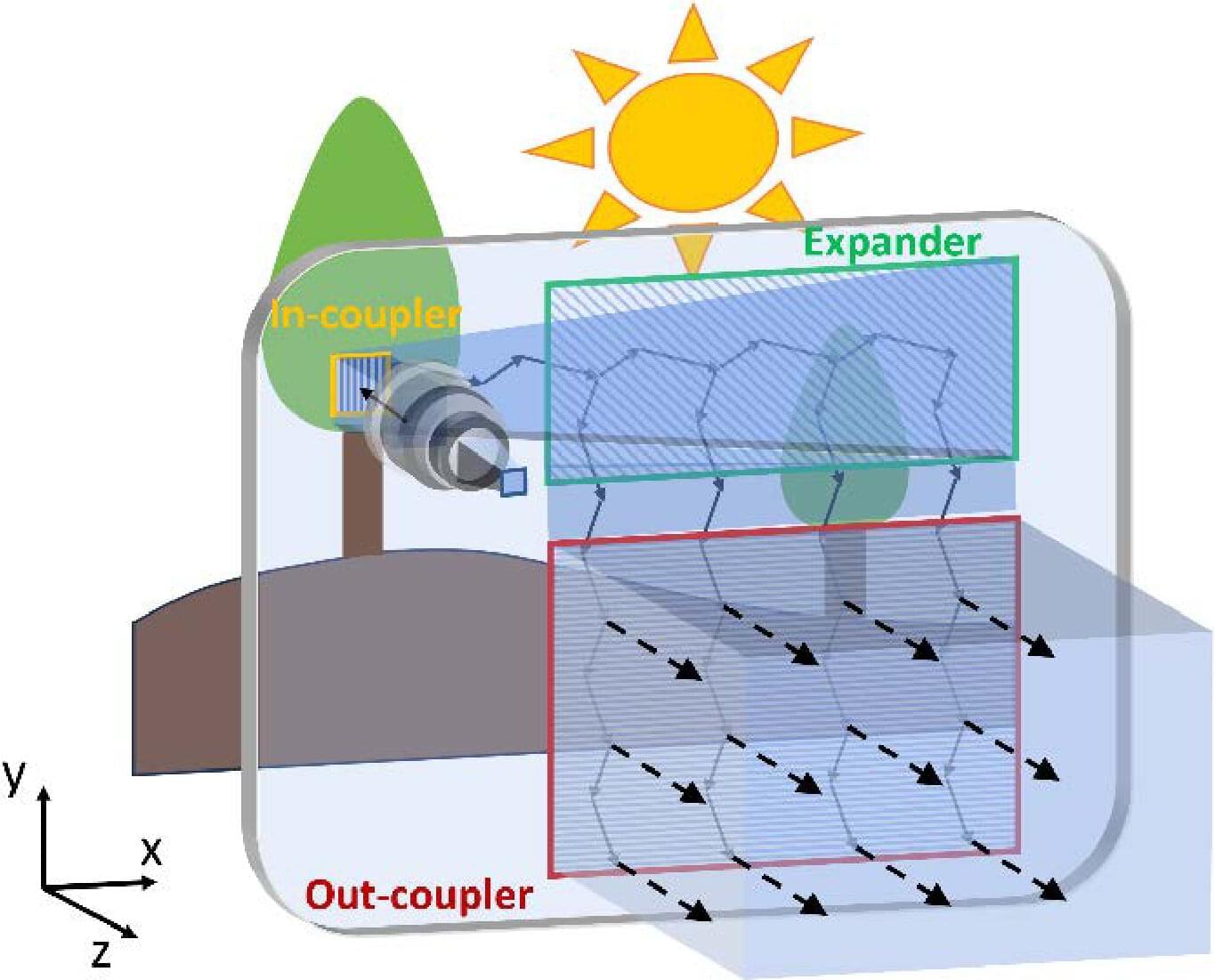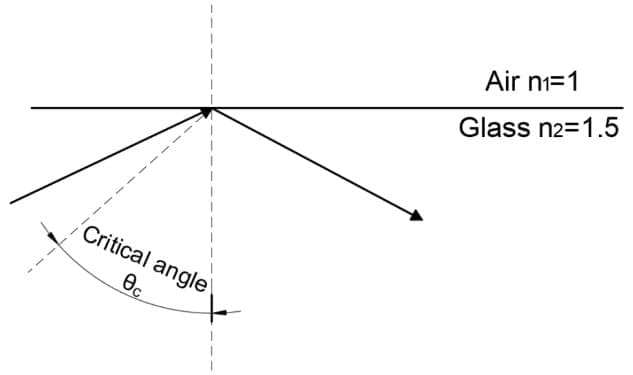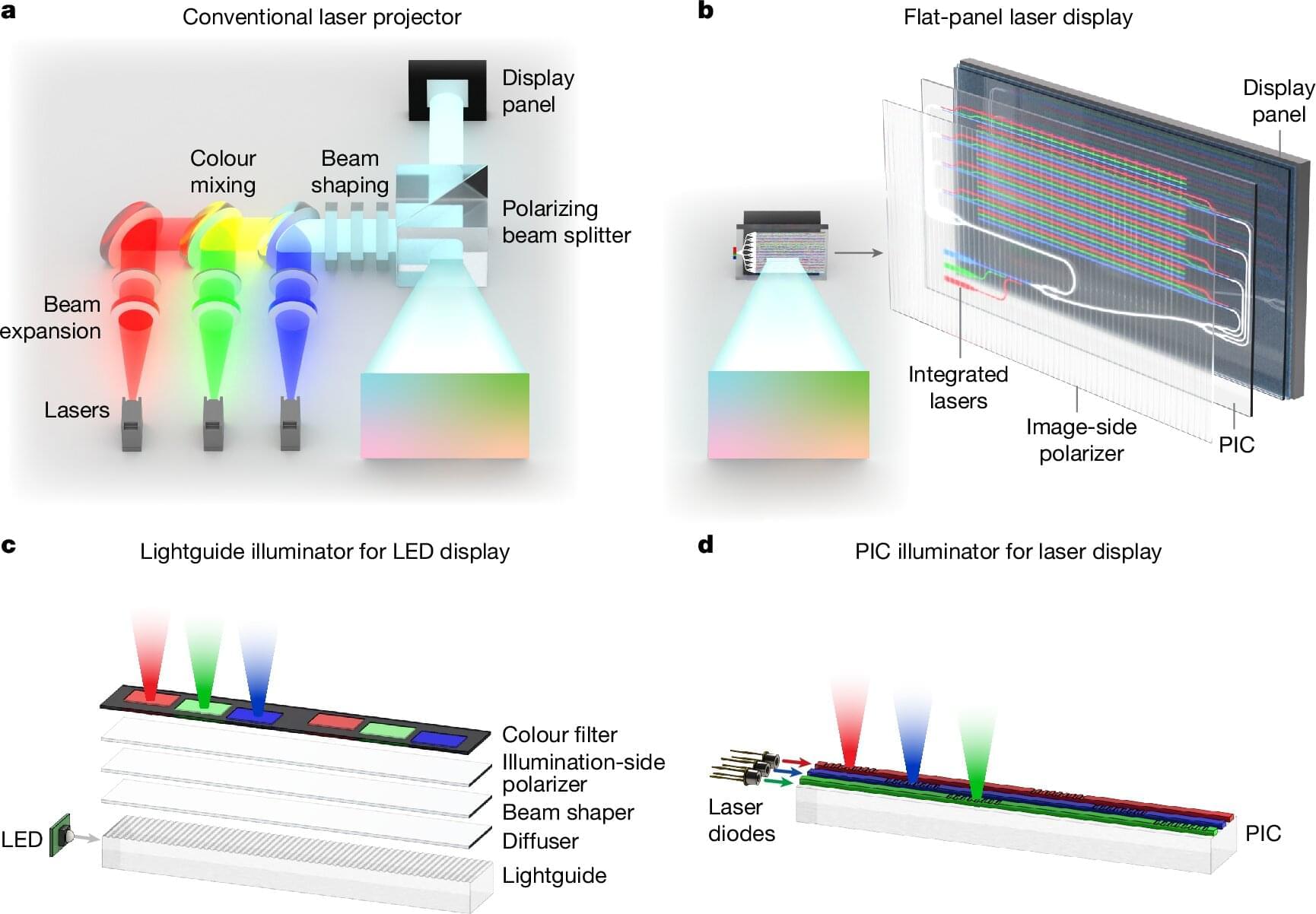Researchers have designed and demonstrated a new optical component that could significantly enhance the brightness and image quality of augmented reality (AR) glasses. The advance brings AR glasses a step closer to becoming as commonplace and useful as today’s smartphones.
“Many of today’s AR headsets are bulky and have a short battery life with displays that are dim and hard to see, especially outdoors,” said research team leader Nick Vamivakas from the University of Rochester. “By creating a much more efficient input port for the display, our work could help make AR glasses much brighter and more power-efficient, moving them from being a niche gadget to something as light and comfortable as a regular pair of eyeglasses.”
In an article published in the journal Optical Materials Express, the researchers describe how they replaced a single waveguide in-coupler—the input port where the image enters the glass—with one featuring three specialized zones, each made of a metasurface material, to achieve improved performance.



